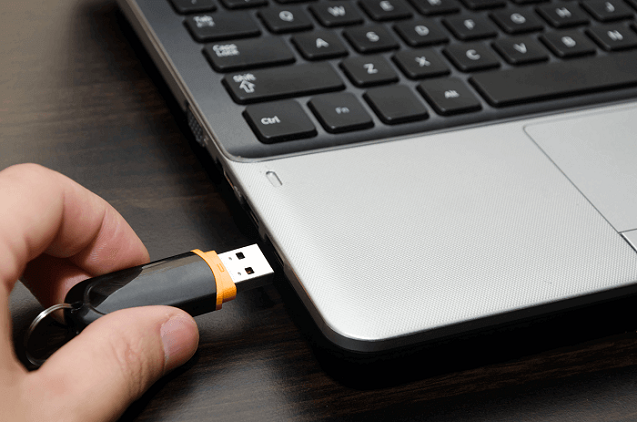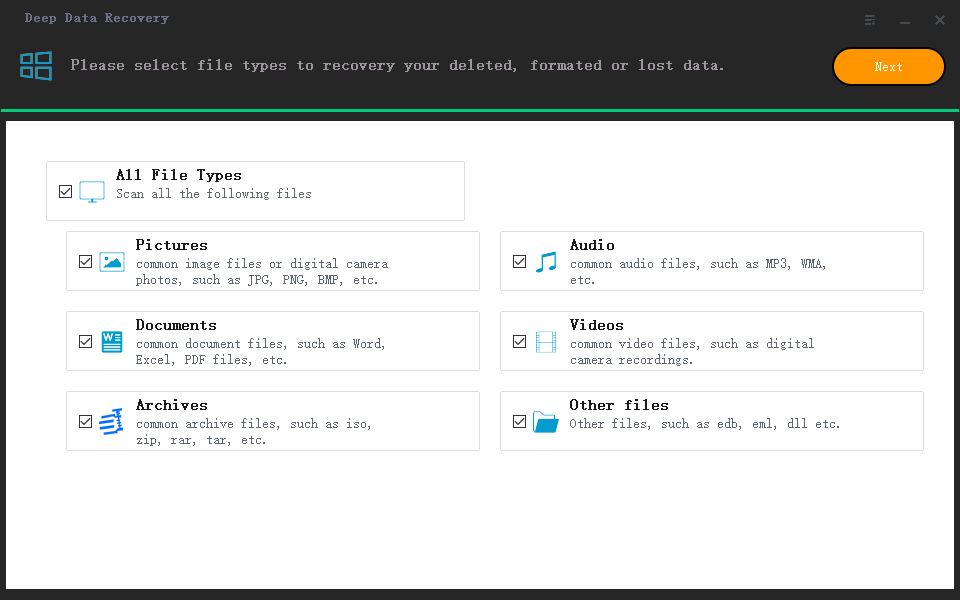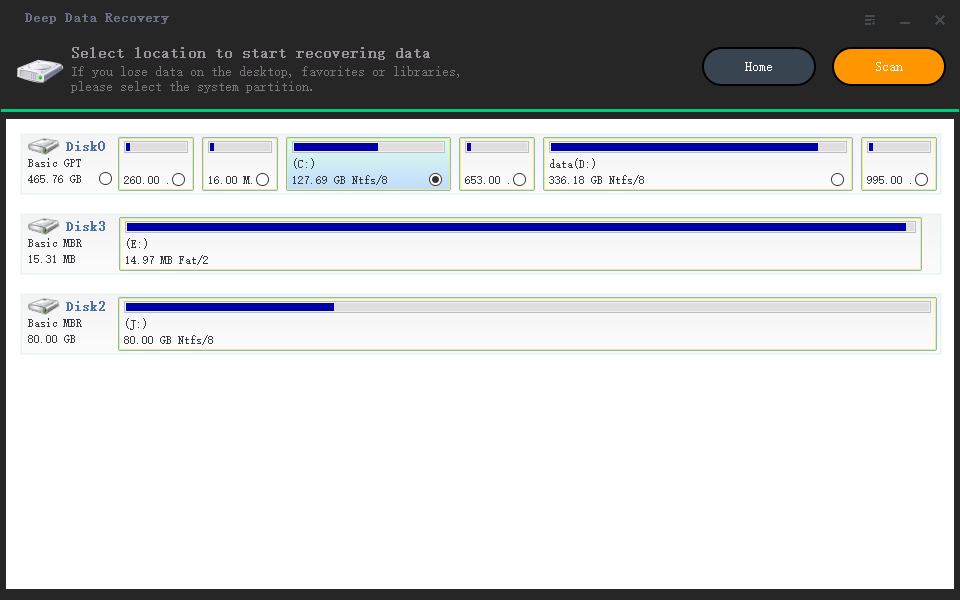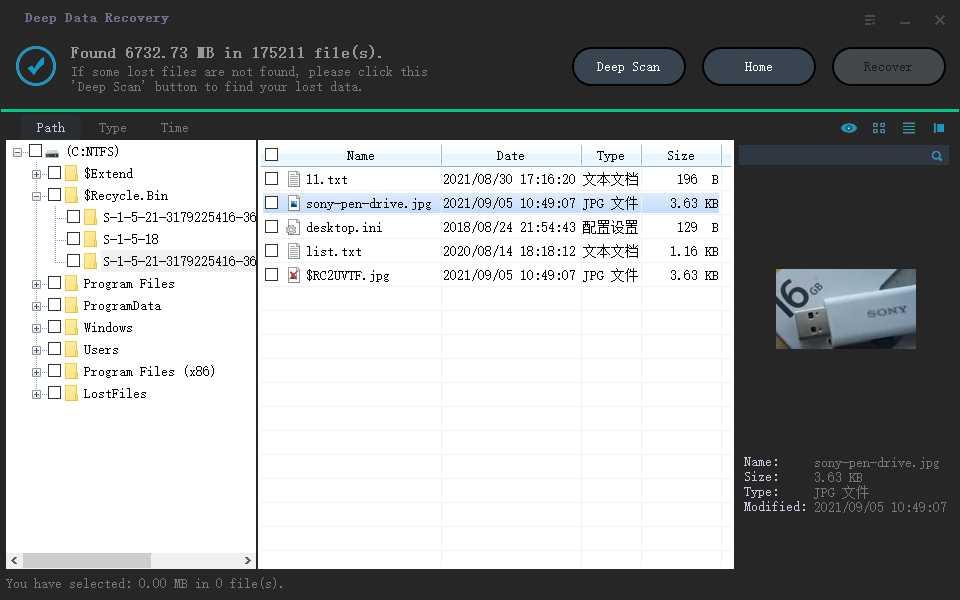Fixed: USB Flash Drive Not Showing Up in Windows 10/11
USB Drive Not Showing Up in Windows
"I've tried all the methods I can think of to connect this USB flash drive to my PC, but my computer still does not show up any signals of the drive. All of my projects from this semester are stored on the drive, how can I get to my files?!"

Preliminary Checks on Your USB Drive
Many users have encountered this particular problem where their USB flash drive just won't show up on their computer. Generally, a USB drive not showing up basically means the drive is disappearing from File Explorer. It might be that the drive is visible in the Disk Management tool.
To verify this, go to This PC > Manage > Disk Management and check whether your USB drive shows up there. Depending on whether it shows up or not, use an appropriate section below to fix your issue.
Here, we offer multiple solutions as there are two possible scenarios where your USB is not detected by your PC. These methods should help you fix your issue without making you lose any data. If you have this issue on a Mac, check out our flash drive not showing up on the Mac guide to resolve your issue.
Fixes for USB Drive Not Showing Up in Windows 10/11 File Explorer Only
If your USB drive shows up in Disk Management, it means Windows can still detect your drive. But, due to some reasons, the USB cannot show up in File Explorer as expected. Some possible reasons are:
- USB driver issues
- Drive letter conflicts
- File system errors
The solutions vary based on the causes but all the solutions are detailed below. Follow these solutions and your issue should be gone.
| Workable Solutions | Step-by-step Troubleshooting |
|---|---|
| Fix 1. Seek for Repair Services | The most reliable way to fix this error is to ask experts for help...Full steps |
| Fix 2. Update USB Driver | Connect USB flash drive to your PC, right-click "This PC", choose "Properties", select "Device Manager"...Full steps |
| Fix 3. Reinstall Disk Driver | Right-click "This PC" > click "Properties" > "Devices Manager". Click disk drives...Full steps |
| Fix 4. Create New Partitions | If your USB shows up as unallocated space in Disk Management, you can create a new partition...Full steps |
| Other Solutions | Assign a New Drive Letter to the USB > Fix File System Errors...Full steps |
Method 1. Seek for Repair Services (Recommended)
The computer cannot read or recognize the USB flash drive on the computer? The most reliable way to fix this error is to ask experts for help. We provide you with an effective manual disk repair service. You can repair your flash drive errors with simple clicks. Contact the experts and get help as soon as possible.
Consult with SalvageData's experts to retrieve data from inaccessible or corrupted data from all brands and formats of digital media.
- Certified ISO–5 class 100 cleanroom recovery
- Free diagnostic, no data, no charge
- Support all operating systems and devices
- Offer a range of turnaround times for fast recovery
Method 2. Update USB Drive Driver
This method works when your USB drive does not show up in File Explorer but shows up as unallocated space in Disk Management. Follow the detailed steps below to make your USB drive usable again.
Step 1. Connect the USB flash drive to your PC, right-click on This PC, and choose Properties.
Step 2. Select Device Manager and expand Disk drives. Find and right-click the problematic USB drive and select Update driver.
Step 3. Click Automatically search for driver software online on the following screen.
Step 4. Wait for the driver to be updated. Then, reboot your computer. Afterward, you can try to reconnect your USB drive to your PC and check whether the USB drive shows up or not.

This method can also be helpful in solving disk-related issues like "The system cannot find the file specified"
Method 3. Reinstall Disk Driver for USB Drive
Step 1. Right-click This PC and choose Properties > Device Manager.
Step 2. Click on Disk drives, right-click on your USB drive that is not showing up in File Explorer, and choose Uninstall device.
Step 3. In the prompt asking you to confirm the removal, click OK. (Wait patiently and let the process finish. If it takes too long, you can remove the USB flash drive from the PC.)
Step 4. Restart your computer and reconnect the USB flash drive/external hard drive to the PC. After the computer restarts, the driver will be automatically installed.

Also Read: Top 10 Best Data Recovery Software on Windows and Mac
Method 4. Create New Partitions
If your USB shows up as unallocated space in Disk Management after updating or reinstalling the driver, you are recommended to create a new partition to make it ready for data storage.
To create new partitions on the USB drive:
Step 1. Right-click This PC and choose Manage > Disk Management.
Step 2. Right-click the unallocated space and choose New Simple Volume.
Step 3. Follow the wizard to finish the remaining process.

Your USB drive should now show up in Windows as usual. You can copy the files you recovered back to your USB if you want.
Method 5. Assign a New Drive Letter to the USB
If the drive letter of your USB drive is the same as one of the drive letters of your computer's hard disk partition, you won't be able to see it in Windows File Explorer. In this case, you need to assign a new drive letter to your USB drive.
Step 1. Right-click This PC and choose Manage > Disk Management.
Step 2. Right-click the volume on your USB flash drive and select Change Drive Letter and Paths.
Step 3. In the window that opens, click Change.
Step 4. Assign a new drive letter to your USB drive and click OK.

Method 6. Fix File System Errors
If your USB flash drive has file system errors, it will show up as RAW and become inaccessible. Here, the file system error refers to an unsupported file system or a damaged file system caused by misoperations or improper formatting. To fix the file system error, you need to format the drive to convert RAW to NTFS or FAT32.
When you format your USB drive, all data on it will be deleted. Therefore, you should first protect your data by making a copy of it. Use a file recovery tool like Deep Data Recovery to recover files from your USB drive before you format them. This program works even when your USB drive is not accessible.
Qiling Data Recovery Software
- Restore lost data from hard drive, emptied recycle bin, memory card, USB flash drive, digital camera, and camcorders
- Recover deleted or lost photos, Excel, PPT, PDF, videos, audio, music, emails, etc.
- Retrieve lost data due to accidental deletion, formatting, hard drive corruption, virus attack, system crash, etc.
Download it now and follow the guide below to restore data from your USB flash drive easily.
Step 1. Choose the file type to scan
Launch Deep Data Recovery and choose file types. Click "Next" to start.

Step 2. Choose the USB drive to scan
Choose your USB drive where you lost important files. Click "Scan" to start.

Step 3. Check and preview USB drive data
When the scanning is finished, you can quickly locate a specific type of file by using the Filter feature as well as the Search option.

Step 4. Restore flash drive data
After checking and finding lost USB drive files, click "Recover" to restore them. You shall save the found files to a safe location on your PC rather than to your USB drive.
After storing your data in a safe place, you need to format the USB drive to convert the file system back to NTFS or other Windows-compatible file systems.
Step 1. Open the Start menu, search for Computer Management, and click Computer Management in the search results.
Step 2. Click Disk Management in the bar on the left-hand side, then find the device in the drive viewer.
Step 3. Right-click on your USB flash drive and select Format to format the drive and make it usable.

If you have similar issues with your hard drive, check out the fixes below.
How to Fix Hard Drive Not Showing Up in Windows
Are your hard drives, be it new or old, internal or external, not showing up in File Explorer or Disk Management? Follow along to learn how to make your hard drive to show up again in Windows 11/10/8/7 without losing data.

Fixes for a Hard Drive Not Showing Up in Windows File Explorer and Disk Management
If your hard drive is not showing up in both Windows File Explorer and Disk Management, the reasons could be:
- USB driver issues
- USB port/cable error
- Physical corruptions of USB
Follow these simple tips to fix your issue.
Method 1. Fix Driver Issues
Whether your USB drive appears in Disk Management or not, you can potentially fix this issue by updating or reinstalling your USB drivers. Refer to the first two methods in the last part of the linked guide to learn how to do that.
Method 2. Change USB Connection
Connection failure is a possible cause. It's a hardware problem that you can identify by checking the USB connection. Generally, there is more than one USB port on your computer. Try another USB port on the same computer, switch from the front USB port to the rear USB port, or connect your USB drive to another computer and check whether the problem persists. Similarly, you can change the USB cable if you are using an external hard drive.
Method 3. Fix Physical Corruptions
If the tips above fail to fix your USB drive that is not showing up in Windows, it's highly likely there is physical damage or corruption on your USB flash drive or external hard drive. This is a tough issue to fix and your best bet is to send your USB drive in for repair.
The Bottom Line
When a USB flash drive does not show up on your Windows PC, it means that the computer has failed to read the USB drive. Therefore, in order to get a USB drive to show up, you should make the USB readable again.
There are many methods for you to make an unrecognized USB drive to show up on PC: update USB flash driver, change drive letter, use Windows' built-in Disk Management tool to detect the USB, and more. Hope one of these methods fixes your USB drive issue.
Related Articles
- How to Fix Windows 10 Error Code 0xc00000e Without Data Loss
- Get 6 Fixes for Excel File Keeps Closing Automatically | Excel File Recovery Tips Behind
- Error: Google Docs Didn't Save My Work _ How to Recover Unsaved Changes to Google Docs
- USB Flash Drive & External Hard Drive - Everything You Should Know